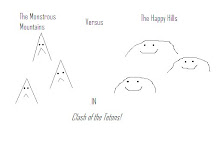Inflation is measured as a change in the price of products over a period of time. It is measured not based on a single product but on the overall prices of all products. While given products and commodities may fluctuate based on market conditions, the sum of all products should remain stable unless certain economic inflationary or deflationary conditions exist. These are:
An increase in the supply of products, deflationary prices will drop
A decrease in the supply of products, inflationary prices will rise
An increase in the supply of money, inflationary
A decrease in the supply of money, deflationary
An increase in the demand for money, deflationary
A decrease in the demand for money, inflationary
An increase in the demand for products, inflationary
A decrease in the demand for products, deflationary
Ceterus Paribus (and it never is), make sense?
Lets redo the list of factors , shall we, notice any patterns
An increase or decrease in the supply or demand for products OR
An increase or decrease in the supply or demand for money
Last week we talked allot about changes in the supply of money. We discussed quantitative easing/debt monetization and its effect on wealth and we considered briefly how it can effect your financial well being through inflation.
Lets take a closer look.
In the last 18-24 months the United States and the World have experienced a decrease in the demand for products and a increase in the demand for money. This is the credit crunch, as people suffer economically they try to hoard cash, people lose their jobs and stop consuming, banks become less stable and stop lending and demand for products decreases while demand for money increases.
To compensate for these problems we have laid off workers and injected capital into the markets through massive government expansion and direct loans to banks. We have gone so far as to directly purchase companies.
Laying off workers has decreased the supply of products.
Injecting capital has increased the supply of money.
Thus we have experienced very little real deflation despite the magnitude of the economic downturn because we have effectively increased the price of products by making them scarcer while simultaneously increasing the supply and availability of capital.
So what is stealth inflation?
First we need to consider what has happened with prices.
Lets take a look at what has happened over the last, say, ten years.
Gold is currently 1090.60 per ounce. In 1998 it was 294.24.
As has been observed before, do to recent turmoil in the markets, the stock market is effectively flat over a ten year period.
....
I took a little break here, and I have to apologize to reader, I got busy with school and did not finish the post. Gold is now currently... 1219.80 an ounce.
...
Lets get down to business, since neither I nor you have time. What is all this stealth inflation stuff about anyway?
Stealth Inflation is devaluation of a currency in the face of price stability. Wait, wait, wait... go back?
Lets look again, the dollar is way down, and gold is way up. Put in other terms, unless you want widgets your money is eroding like sand underneath your feet.
This is possible because what we have always aimed for is price stability. Congratulations, prices are stable.
But the US currency is collapsing, it wont be long before a lot more people see it.
Note: I am not saying the problem is unsolvable, simply that it is big, present and ugly. I have an idea.
